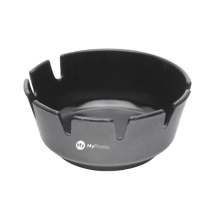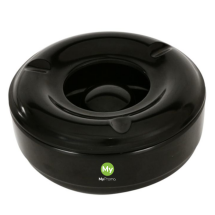Melamine
What is Melamine?
Melamine is a versatile organic compound widely used in the manufacturing industry, particularly known for its application in producing durable and aesthetically pleasing household items, kitchenware, and promotional gifts. Melamine is valued for its ability to create hard, glossy, and highly resistant surfaces. It was first synthesized by a German chemist, Justus von Liebig, in the 1830s, and since then, it has evolved into an essential material in various industries.The production of melamine starts with the extraction of urea, which is then subjected to a chemical reaction called polymerization. This process transforms the urea into melamine crystals. These crystals are then processed further to form melamine resin, which is used to create different products. The resin can be molded, laminated, or combined with other materials to enhance its properties.
Key Properties of Melamine
Melamine is renowned for its impressive durability. It is heat-resistant, which makes it ideal for kitchenware that needs to withstand high temperatures. The material is also resistant to scratches and impacts, ensuring that products made from melamine retain their appearance even after prolonged use. Additionally, melamine surfaces are easy to clean and maintain, which adds to their appeal in household and commercial settings.
Applications of Melamine
Melamine's versatility allows it to be used in various applications. Common household items like plates, bowls, and mugs are often made from melamine due to its lightweight yet sturdy nature. Beyond kitchenware, melamine is used in laminates for furniture, providing a sleek and modern finish that is both attractive and durable. In the world of promotional products, melamine is a popular choice for personalized items such as personalized coasters, personalized keyrings, and custom printed tableware. These items can be easily branded with company logos or designs, making them perfect for marketing and promotional purposes.
Advantages of Using Melamine in Manufacturing
One of the primary advantages of melamine is its cost-effectiveness. It provides an affordable option for producing high-quality, durable goods without compromising on aesthetics. Melamine's resistance to heat and scratching makes it superior to many other materials used in similar applications. Its ability to be easily cleaned and maintained further enhances its practicality for everyday use.
Melamine Compared to Other Materials
When compared to other materials like plastic, wood, or ceramic, melamine stands out for its unique combination of properties. Unlike plastic, melamine offers a more robust and heat-resistant option. Compared to wood, melamine does not absorb moisture, making it more hygienic and suitable for kitchenware. While ceramic can be more elegant, melamine provides a more shatterproof and lightweight alternative, ideal for both everyday use and promotional items.
Challenges and Limitations of Melamine
Despite its many advantages, melamine does have some limitations. One of the main concerns is its sensitivity to extreme temperatures; while it is heat-resistant, it can degrade if exposed to very high heat over prolonged periods. Additionally, melamine should not be used in microwaves as it can cause the material to break down and potentially release harmful chemicals. Another challenge is the potential for environmental impact, as melamine is not biodegradable and recycling options are limited.
| Property | Melamine | Plastic | Wood | Ceramic |
|---|---|---|---|---|
| Durability | Highly durable | Moderate to high | Variable, can be less durable | High but can be brittle |
| Heat Resistance | High | Low to moderate | Low to moderate | High |
| Scratch Resistance | High | Low to moderate | Low to moderate | High |
| Impact Resistance | High | Moderate | Low to moderate | Low to moderate |
| Moisture Resistance | High | Variable, often low | Low | High |
| Weight | Lightweight | Lightweight | Varies, generally heavier | Heavier |
| Hygiene | High, non-absorbent | Variable, non-absorbent | Low, absorbent | High, non-absorbent |
| Maintenance | Easy to clean and maintain | Easy to clean, varies | Requires more maintenance | Easy to clean, can be fragile |
| Biodegradability | Non-biodegradable | Variable, often non-biodegradable | Biodegradable | Non-biodegradable |
| Suitability for Microwaves | Not suitable | Varies, often suitable | Not suitable | Suitable |
| Applications | Kitchenware, furniture laminates, promotional items | Wide range, including containers and toys | Furniture, decorative items, kitchenware | Tableware, decorative items |
What is melamine used for?
Melamine is used in a wide range of applications, including household items such as plates, bowls, and mugs, kitchenware, furniture laminates, and promotional items like coasters and keychains. Its durability and resistance to heat and scratches make it ideal for these uses.
Is melamine safe for food contact?
Yes, melamine is safe for food contact when used properly. It is commonly used in the production of kitchenware and tableware. However, it is not recommended to use melamine products in microwaves or with highly acidic foods, as these can cause the material to break down and potentially release harmful chemicals.
How should I clean and care for melamine products?
Melamine products are easy to clean and maintain. They can be washed in warm soapy water or placed in the dishwasher. Avoid using abrasive scrubbers or harsh chemicals, as these can damage the surface. Do not use melamine products in the microwave.
What are the advantages of using melamine over other materials?
Melamine offers several advantages, including high durability, heat resistance, scratch resistance, and lightweight properties. It is also cost-effective and easy to clean. These characteristics make it superior to many other materials like plastic, wood, and ceramic for certain applications.
Can melamine be recycled?
Melamine is not biodegradable and has limited recycling options. While some recycling programs may accept melamine, it is generally considered non-recyclable. Proper disposal methods should be followed according to local waste management regulations.


